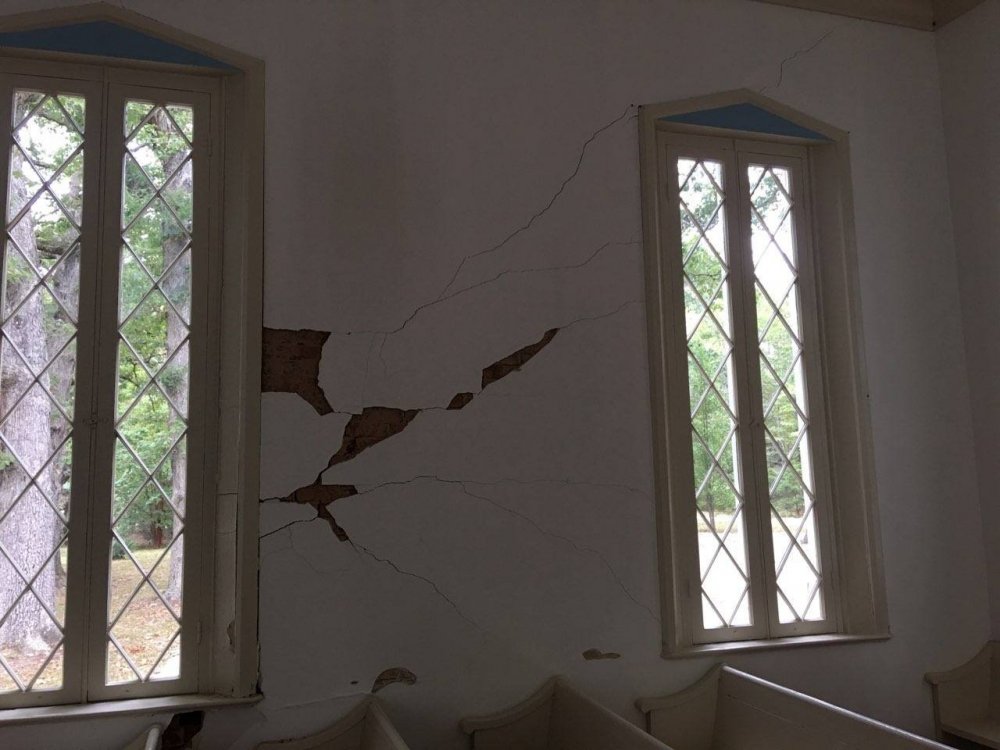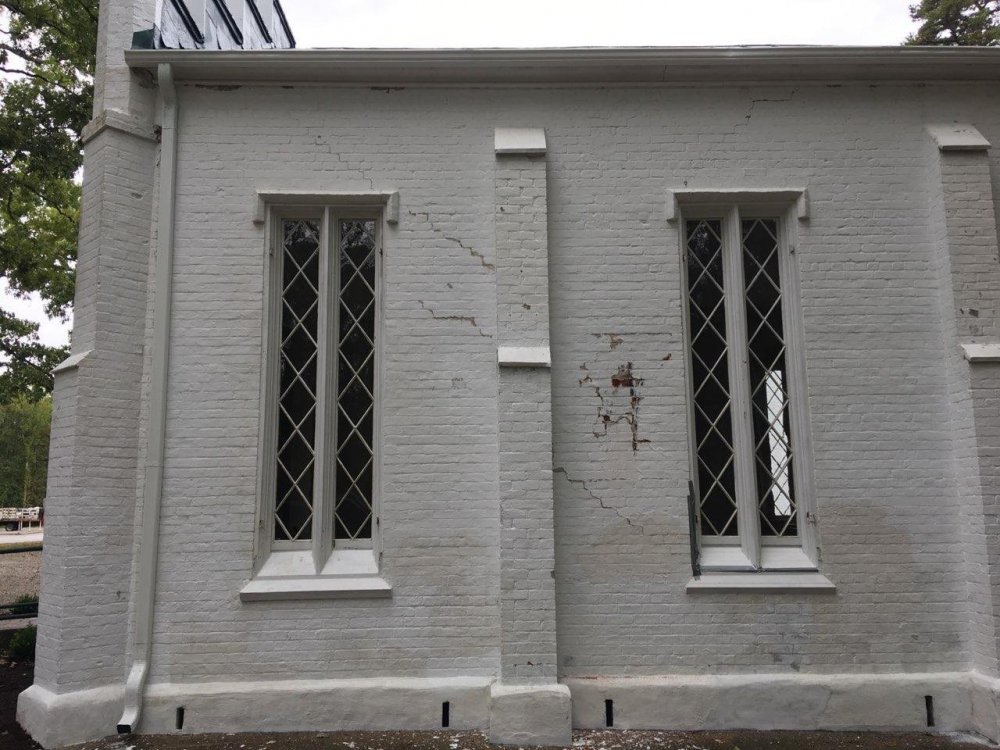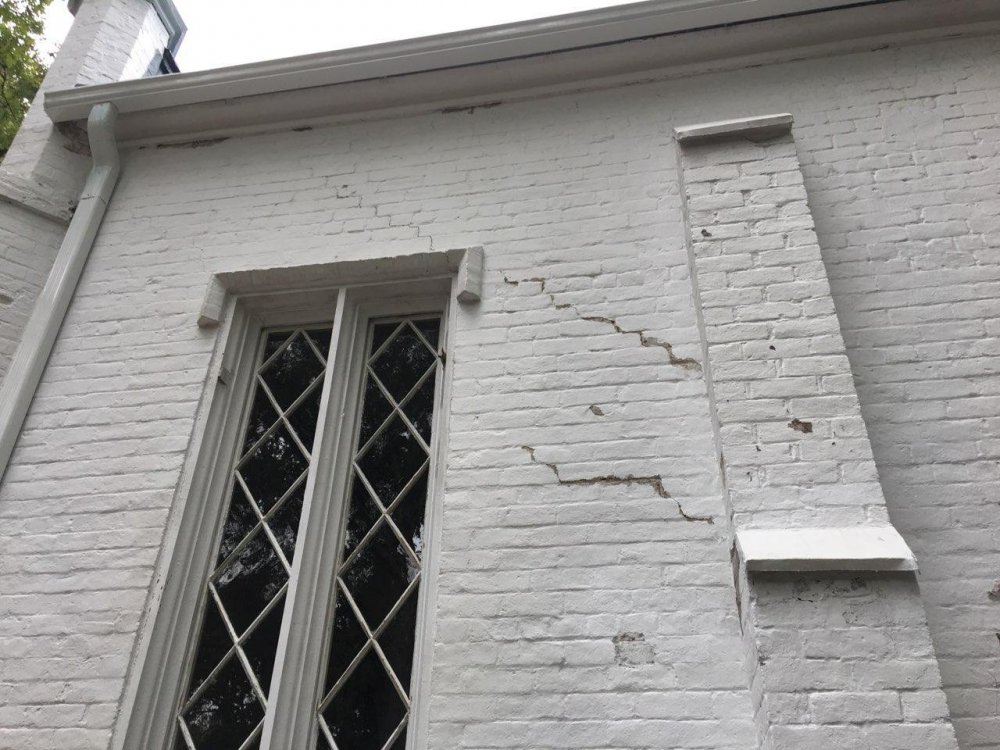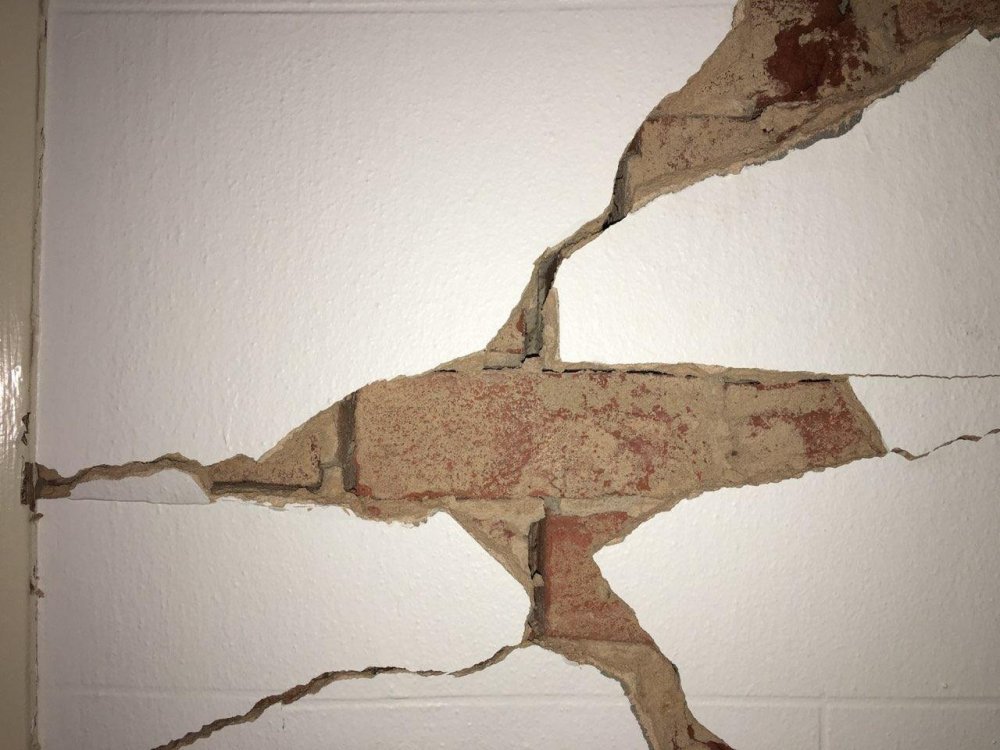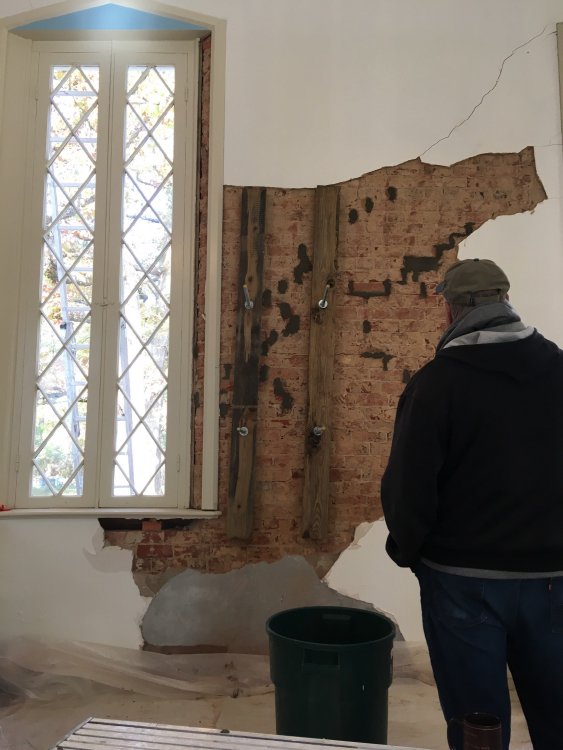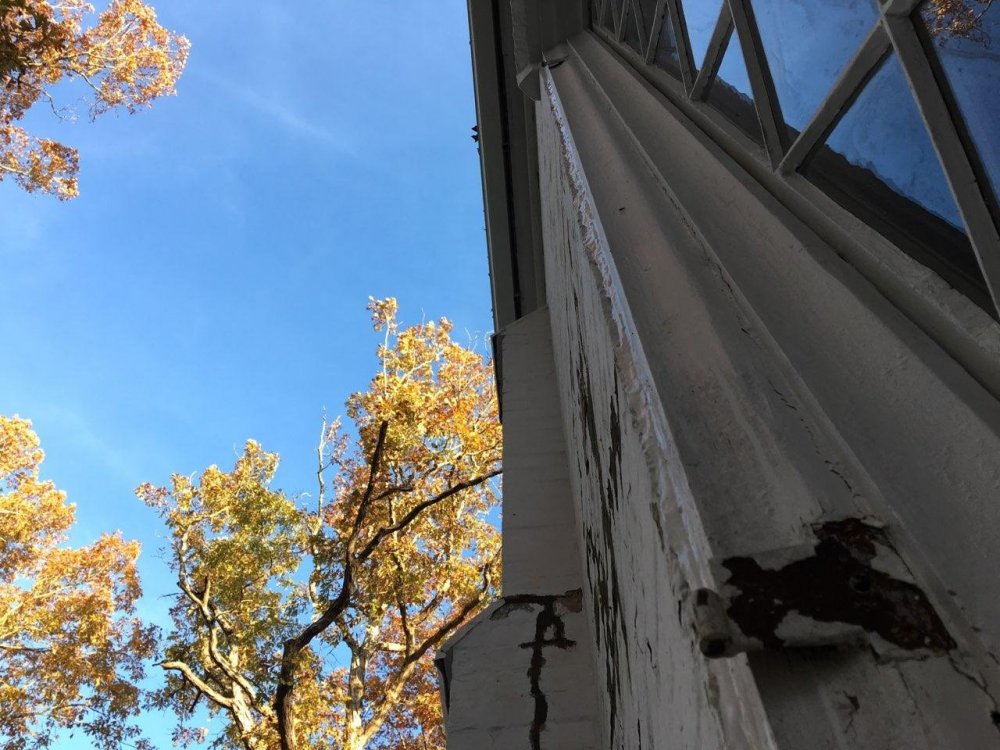-
Posts
2,607 -
Joined
-
Last visited
Personal Information
-
Location
Rockville, VA
- Website
-
Occupation
Home Inspector
Recent Profile Visitors
3,903 profile views
mgbinspect's Achievements

Advanced Member (5/5)
4
Reputation
-
Aw, Les - How many times have you been the very first guy that I reach out to personally for input? But, you're right - I certainly should have asked you since you have come up with great info! I hang my head in shame... Bless you sir!
-
mgbinspect changed their profile photo
-
Greetings all, One of my fellow home inspectors called me yesterday, as the "old guy" to see if I knew when installing an electrical service panel in a bathroom became verboten. He had actually been asked that question by a local county building inspection official, who is dealing with it in a renovated home. (Virginia is an unusual state in that only new work must meet new code requirements. Old work is deemed grandfathered.) So, I in turn reached out to Bill Kibbel, who suggested that I post it here - being confident that Jim Katen might be the guy with the answer. The questions: 1. Was it ever acceptable to install an electrical service panel in a bathroom. 2. When did it become no longer acceptable to do so? Thanks in advance for reliable input! Mike
-
mgbinspect started following No vapor barrier behind stone veneer? , CMU's , Ghosts From The Past (Tradesman - A Fading If Not Altogether Lost Art) and 3 others
-
And, they were awfull to install because they rarely split squarely. (The split faces often would not generally align with the plane of the masonry wall surface. They really needed to be dressed much like stone often is before being installed, but no one ever permitted the extra time needed to do so.) For this reason, I hated working with split-faced block. To me it looked unfinished.
-
I always installed a layer of 30 lb. felt paper behind our stonework, and would not ever install stone in the manner you posted here. But, this does confirm what I've been saying for years - moisture does not typically intrude much through properly installed masonry. It is usually Voids in head and bed joints that permit moisture to intrude. In this instance, stone is not very absorbent and stone mortar is typically high in cement, so moisture intrusion is not usually a big issue.
-
They no doubt are heavy, which reminds me of concrete block made by Superior out of Frederick, MD. Their 8 × 12 × 16 concrete blocks were very dense using pretty consistently fine aggregate and more than average cement. The block were so hard that they would actually ring when tapped with a hammer. They tipped the scale at probably close to twice the weight of a Solite concrete block and could therefore not be set in place with one hand. Installing exceptionally heavy concrete block is an isometric exercise because you can't simply place the block on the mortar bed without squirting the mortar out from under the block. The unit needs to be carefully eased down onto the mortar bed with a slight pause as you cut the mortar vrom the faces. This gives the block time to absorb some moisture from the mortar, which stiffens the bed enough to bear the weight. It's a workout!
-

A tad of foundation movement
mgbinspect replied to Chad Fabry's topic in Inspecting/Appreciating Old Homes
What, do you think, triggered that? All I did was make,a comment here? -
mgbinspect started following Jim Katen
-
mgbinspect started following hausdok
-
mgbinspect started following Les
-
mgbinspect started following Bill Kibbel
-

A tad of foundation movement
mgbinspect replied to Chad Fabry's topic in Inspecting/Appreciating Old Homes
A perfect example of auto-generated healing at work! -
This is actually a repost from TIJ in 2011, but folks new to home inspecting should clearly understand how profoundly new construction has changed in a little over 100 years. This is now my 28th year of inspecting homes after working in the masonry trade and Design/Build construction. As I am confident many home inspectors from my era can confirm, there are no true tradesmen anymore in construction. There are no doubt still gifted craftsmen who have passed on skills from generation to generation as a hobby, but it is rare to find anyone possessing such skills on a construction site. My hope in starting this thread is to: 1. enjoy posts from others who have met and watched masters of a trade at work and 2. remind home inspectors that much of what they behold when inspecting old homes is more than simply a good work. It is the product of tradesmen that loved and took great pride in what they did. Again, this was actually posted here in 2011 and is slightly modified: "I find myself dwelling on an element of old homes that makes me sad - something that I know Bill K, and many here can appreciate: One of the things that makes old homes outstanding, is the fact that they were constructed by true masters - men obsessed with finding near perfection in their field of endeavor. It was a bug that they caught - a sense of pride and tradition. I had that bug. I don't say this "about me", but rather about "that bug" - that obsession and drive to master a trade: In commercial work, I was often one of three men installing masonry on a long gymnasium wall. The other two guys were killing themselves to meet me in the middle of the wall. My work hardly needed to be cleaned (neat as a pin) and theirs looked like a train wreck. I went home relaxed, while they went home exhausted. (Truth be told, I usually didn't go home. I went on to a side job and laid more bricks until dark.) There was nothing special about me. Anyone could do what I did. Most simply didn't care to get that good. All they wanted was a paycheck and a six pack. In masonry, to achieve that level of knowledge and skill earned one the title "mechanic" and it was not a word thrown around lightly. There was a level of respect that came with the title. And, there was a deep sense of pride and accomplishment in knowing that I could walk onto any job site and do without hesitation do anything the foreman asked me to do. I met very few mechanics during the time I was in the trade. The funny thing about masonry is that you know a man's skill level in less than two minutes. You'd hire a guy and ask him to do something, and by the time he had set up and begun, you already knew he had stretched the truth about his ability. At the Design/Build firm I used to sell and design for, was a master carpenter, Irving Polan. Watching Irving do trim carpentry, was like watching one do ballet. Like me, he had a pencil on his ear, and he knew where it and most of his other tools were, without even looking. He could just reach for them like a blind man. He was so fluent that trying to help him actually slowed him down. Every time he rocked right, everything that could be done on his right foot was accomplished, and as he rocked left the motion continued. It was all about harnessing inertia and teaming it up with method and knowledge. Watching Irving work was amazing. He'd do this, while gnawing on a wad of tobacco the size of a golf ball, and singing or telling joke. He was happy when he was working. Sadly, he was diagnosed one day with pancreatic cancer and was gone in a matter of months. But his memory lives on in my mind anyway. I think the saddest thing of all is something that a lot of folks don't even understand: tradesmen from early American History were gentlemen - often multi-lingual mathematicians and architects all rolled up into one neat package - truly brilliant guys. If they met us, they'd think we were absolute dunces. Well, if they met many of the guys here on TIJ, they'd actually be pleasantly surprised to have stumbled upon an oasis of knowledge and understanding, in a wasteland. In example: I used to watch masons try to establish right angles by projecting outward with a taut line and a square, or the old 3, 4, 5 technique, both of which are really unreliable ways to do it, when one can simply swing large arcs to establish the precise point that is at right angle. Or... Using triangulation to check the squareness of the points in a foundation: I once laid out a foundation for a New England log home that was really cut up. It had fourteen bearing heights. The guys that came to set the log home, actually asked the homeowner for my name and called to inform me that this was the first time they had set one of their log homes on a foundation and it fit like a glove - no shims, no overhangs, etc. (Thank heaven for triangulation and a good transit.) All such skills were a snap - a given - to the masters of the past, and are mostly lost to the average alleged tradesmen of today. It seems there's always a trade off, with the advent of technology - production goes up, but the mastery of the trade fades away. The tradesman gets dumbed down. That fact is difficult for the young to realize and appreciate, because they have never had the pure pleasure of watching a master tradesman in motion. It is a difficult experience to adequately describe. On commercial jobs fellow masons would sometimes, in total frustration, say to me, "Mike, slow down. You're making us look bad.", when making them look bad was the very farthest thing from my mind. I wasn't competing with them. I was quite simply in my element and cruising along at a peak level of human efficiency. I was in love with what I did and was in the heat of doing it. Everything else had melted away into oblivion. When I look at the old stately homes that so many of us inspect, I see those tradesmen - mechanics, master carpenters and plumbers at work, as ghostly figures in my mind. If you're really looking, there's so much more to these old homes than meets the eye..."
-
- 1
-

-

20-year-old building – Spalling limestone
mgbinspect replied to Mike Lamb's topic in Exteriors Forum
Raked joints for the limestone was probably a bad choice and contributing factor as well permitting water to rest on and soak into all sides of the limestone. What a shame. -
I'm with Jerry on this one. There is a lot of traditional three-coat stucco here in Richmond that is very old and still performing with no significant moisture intrusion and structural damage. Cement stucco does absorb moisture, but the moisture evaporates out of it well too. And, most traditional stucco around here has been painted. I can't really think of any home with traditional three-coat stucco that I've inspected over the past twenty-eight years that suffered any significant structural damage due to moisture intrusion through the stucco.
-
It seems to me that if the staining was caused by moisture behind the veneer, only the very bottom of the plastic insert in the weeps would be stained along with the very bottom of the course of block resting on the flashing. Sometimes irrigation systems cause staining like this if they are on a well, which is done here near the coast. Split faced concrete block are indeed porous, but it takes a whole lot of rain to cause water to significantly penetrate 4" of masonry. When it does, the real cause is typically head joints that are not full, which is also true of brickwork. Properly installed masonry rarely permits significant water penetration, but poorly installed masonry can be a nightmare.
-
Just noticed this question, That's a nice looking parge job! IMHO, if the surface was properly prepared (cleaned and sufficiently damp almost but not quite to saturation) and the work was properly cured (kept damp for about three or four days), the parging should last for a very long time. Lath should not be needed when applied directly on masonry unless the surface the parging is applied to is not porous enough (tile, painted, etc.). The raked joints of the brickwork should permit the parging to key into the brickwork nicely.
-

The Durability of Solid Masonry Construction
mgbinspect replied to mgbinspect's topic in Inspecting/Appreciating Old Homes
I had not given that a thought, but I'm certain you are right. -

The Durability of Solid Masonry Construction
mgbinspect replied to mgbinspect's topic in Inspecting/Appreciating Old Homes
That is my assumption. The point up was superficial. -
Recently, I was contacted by a fellow local home inspector regarding a mishap that caused significant structural damage to a solid masonry Episcopalian church in Powhatan, Virginia. The elbow joint of a bucket lift struck the side of the building and punched the masonry inward several inches sending cracks outward and upward throughout that side of the building. They wanted me to look at the damage and tell them how best to make repairs. Upon arriving, I surveyed the damage. The brickwork was punched in about two to three inches on the outside surface, but the inside wythes bulged in exponentially more as would be expected due to rotation. This inward rotation lifted up the masonry above the point of impact which caused diagonal stair-stepped cracks to radiate outward from that point. The plaster was severely cracked and had popped off in several locations. No doubt the initial impact pushed the wall in even more, but when the outside force was removed the masonry settled back down some. My first thought was to remove bricks from the center of the point of impact and hope that as this was progressively done the brickwork might close back up to leave a small repair. But, as I mulled things over in my head I concluded that, because this was lime mortar and the separation between brick and mortar was so clean, the brickwork should return to its original position with the right pressure. Exerting force to the wall from the inside or outside was out of the question because lateral force might compound the structural damage. It needed a force that would not exert lateral force to the building. I finally recommended drilling holes through the wall and drawing lumber plates together with threaded rods, washers and nuts to press the masonry back together in a vice like fashion. This approach was considered by a local licensed structural engineer who agreed that it was worth a try. I spoke with that engineer later the same day, and we agreed that we did not expect this to be 100% successful but 85% would be enough to point up re-apply plaster and go on with life. I did not hear from anyone for three weeks, so I called the fellow home inspector a couple of days ago to see how things were going. He informed me that the repairs had just been completed that same day and that it worked beautifully. All of the cracks closed up completely and the wall was straight and plumb. He sent pictures and the only disappointment I experienced was that the mortar used to point up the masonry was cementicious. But the exterior of the building was painted and the inside plastered. And the point up work was very cosmetic, so I'm thankful that everything went back together so nicely. In retrospect, I suspect that this approach might not have been the first thought to a modern masonry or general contractor, but it probably would have been for a mason back when the building was constructed. Now autogenous healing will hopefully knit things completely back together over time.



.thumb.jpg.47289739c2f0532f4faffd07858bee59.jpg)




